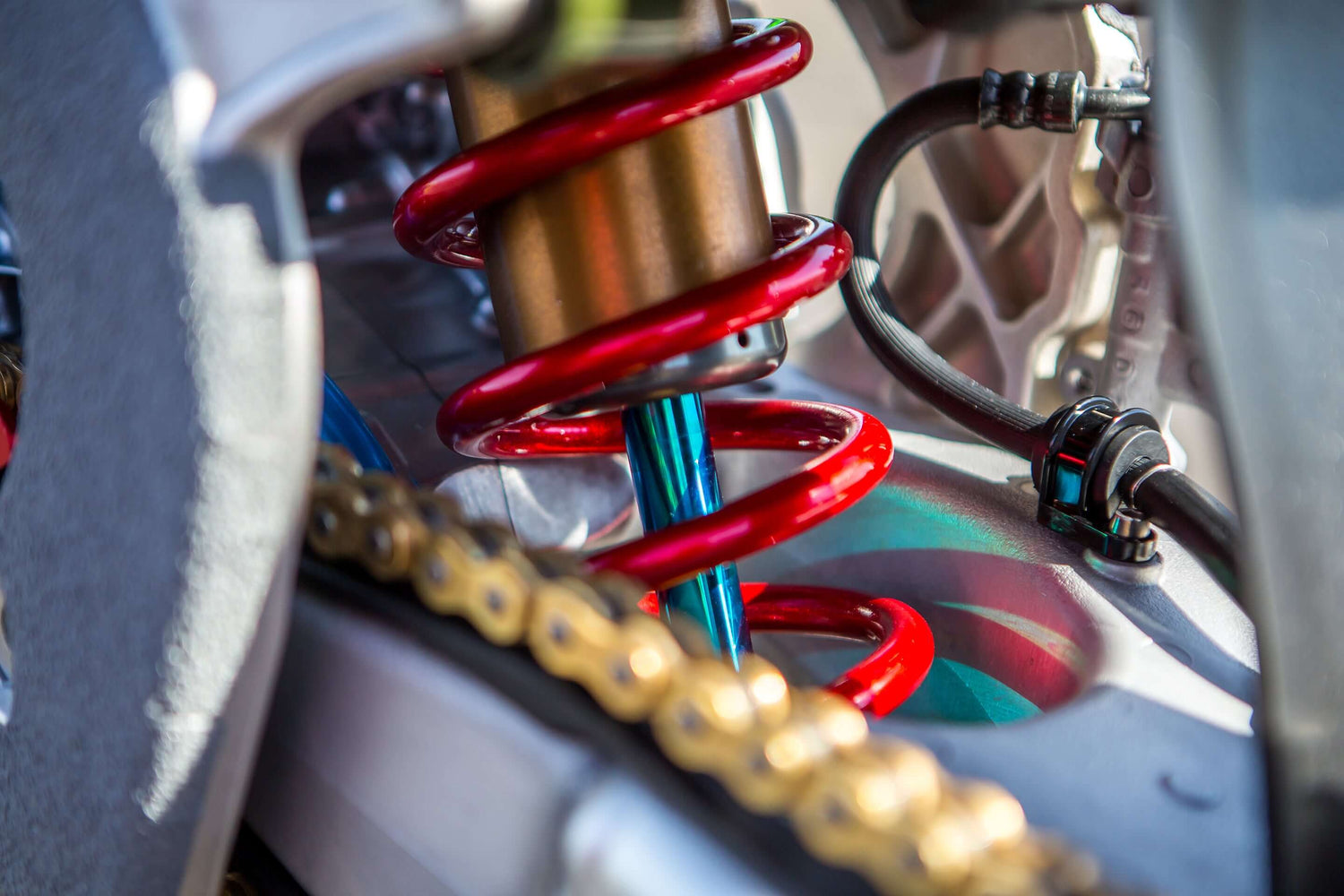You have probably noticed whenever you see references to sag you will see both static sag and rider sag. Sometimes you will hear to them referred to free sag and race sag depending on the source. Static, or free sag is the amount the suspension compresses from fully unloaded under the bike's own weight and is very important on any bike except full suspension MTB, where the bike weight is so much less than the rider’s weight, the suspension does not compress under the bikes weight. Rider sag, or race sag, is the amount the suspension compresses (sags) with the rider mounted in full riding gear. While rider sag is obviously the key measurement, static sag is just as important, especially when setting up a new bike for a particular rider as it will tell you if you have the correct spring rates installed. It can also tell you al lot about the health of your suspension. To take these measurements you can get a helper and a tape measure, or use a dedicated system like the Motool Slacker Digital Suspension Tuner. Here is an overview of how to tell if you have the correct spring rates installed. This is one of the most overlooked and misunderstood aspects of bike setup as, on it’s face, it seems backwards until you really think about it.
First of all, the static sag is not relevant until you have mounted the bike and set your rider sag. You need to adjust the bike with the rider mounted first to be able to tell if the spring is right. I know some manuals (KTM) focus on setting static sag first and then checking to see if the rider sag is within a certain range. This is totally backwards because you want to set your rider sag where you like it and then just make sure your static sag is within the range specified. You do not want your rider sag to just be whatever it is within that range, you want it set to a specific number you like and let the static fall within the recommended range wherever it may be. The static sag just needs to be within the range and that is all. Always adjust the bike with the rider mounted first and then look at the static sag. With Slacker, you can just look at the reading when the rider steps off the bike after measuring the rider sag and that is your static sag.
Too Little Static Sag- If you find the static sag measurement is smaller than the range provided by the manufacturer or suspension tuner, your spring is too soft. I know this sounds weird but here we go. If the spring is too soft, it will take a ton of preload to hold the rider up to get the bike adjusted for their weight. As a result, when the rider dismounts, the spring has so much preload on it that it pushes the shock or fork way back up in the stroke making the amount the suspension compresses under the bikes weight minimal, hence the small static sag measurement. You will need to upgrade to a stiffer spring.
Too Much Static Sag- If you find that you have too much static sag after adjusting the rider sag, it means your spring is too stiff. If you barely have to preload the spring to get the rider sag correct, when the rider dismounts, the spring will not hold the bike all the way up because it barely has any preload on it so you get a static sag reading that is bigger than the recommended range. This is telling you that you need to get a softer spring.
Keep in mind that there may be multiple spring rates that can get you within that range and it is worth trying them if you are really looking for a killer setup. I prefer mine to be just short of too much static sag which means I like a stiffer spring, but it will still land in that range. This is all about preference so nobody can tell you which one is best for you, just put in the work to find it and you will be rewarded. If you like to keep it simple, all you need to do is get the static sag somewhere within the range.
Once you have the right spring rate installed, it is still a very relevant measurement because if you see the static is out of range, it likely means you need to service the suspension or linkage. I always look at this number when I step off the bike after adjusting my rider sag to make sure nothing is out of whack.
So just remember, if the static sag is measurement too big, you need a softer spring. If the static sag is too small, you need a stiffer spring. Cheers!



1 comment
Peter Brown
Well written and so easy to understand. Best I’ve seen.
Well written and so easy to understand. Best I’ve seen.